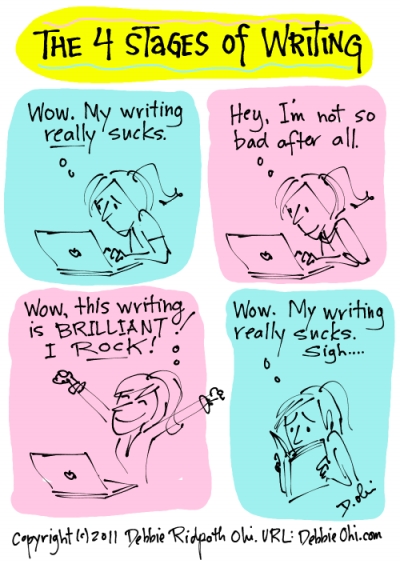 Cried But Did The Thing Anyway is a series of blogs posted on a roughly weekly basis about various challenges faced by one Maria Stanislav, struggling writer, underpaid translator, and chronic volunteer. If you’ve got nothing better to do with your time, you can read the whole damn thing here, or check out a few choice pieces, like Why Self-Care Is Important, or Why Making Art Means Being Vulnerable.
Cried But Did The Thing Anyway is a series of blogs posted on a roughly weekly basis about various challenges faced by one Maria Stanislav, struggling writer, underpaid translator, and chronic volunteer. If you’ve got nothing better to do with your time, you can read the whole damn thing here, or check out a few choice pieces, like Why Self-Care Is Important, or Why Making Art Means Being Vulnerable.
 Also, have you heard, that my comic, A Song For My Brother, is now available on Etsy, including a wonderfully affordable digital version?
Also, have you heard, that my comic, A Song For My Brother, is now available on Etsy, including a wonderfully affordable digital version?
Check out the free preview here. It’s pretty awesome.
Guess what, this week I’m actually going to talk about writing.
Yeah, what the big text above says. I’ve been meaning to talk about some practical aspect of writing for a while now, but have been consistently stopped by a voice in my head that said – hey, before you make posts dispensing invaluable writing advice, how about you, y’know, WRITE something? The voice of reason can be a downright bitch.
It’s true, though. Short of a recent short story, a fanfic one-shot, and a short comic book, I haven’t written anything since October 2014. I think it was the realization of exactly how long it’s been since I touched my novel that made me buckle up and face the monster I’ve been avoiding all this time. The moleskine in which I write my first draft.
It went something like this.
For the rest of this post to make sense, I suppose I should talk a little about my process.
When I write short stories, it’s anybody’s guess whether I’m going to type straight to the screen, or write in a notebook, or scribble on a McDonald’s tray liner (true story). For novels, though, I’ve developed a process that works for me.
Draft 1.0
First, I write the words in a Moleskine. Specifically, a Plain Large Moleskine Notebook (192 pages, slightly bigger than A5, soft black cover, unruled acid-free paper the shade of parchment). So far, I’ve been using two of those per novel – and since I’m currently on book two in a six-book series, if you ever want to give me a gift, you know what to do.
Also, since I’ve taken a tangent into stationery, I’ll talk about pens, too. As particular as I am about my writing notebook, I’m entirely unfussed about pens, my only requirement being a rubber grip. At this time, my favorite is the black ballpoint Zebra Z-Grip, which sits very comfortably in my hand, and is very budget-friendly, at roughly 50p / pen.
So, basically, that’s it for the first draft – black ballpoint, Moleskine, and wherever I land my butt. Which, more often than not, is Starbucks. (Yes; I am THAT writer. Commence the abuse of my pretentious self.)
Draft 1.5
Ah, this is where things get interesting. Traditionally, once I was done writing for the day, or when I reached the end of a chapter, I would take my handwritten draft 1.0 and type it up, creating a draft 1.5 of sorts. I wouldn’t be editing per se – but cleaning up what I’d put on the paper, rolling some dialogue around in my mouth to see if it sounded natural, fixing the most glaring problems. Then, and only then would I proceed to write the next bit of the story.
Draft 2.0
This is a draft that happens when the body of the novel has been written (1.0) AND typed up as I go along (1.5). That’s when I go back to the beginning, and start revising. This is also the stage where I involve the most trusted of my beta readers. Any real rewriting of pieces of the novel happens at this stage.
Draft 3.0
This draft is basically a proofread of Draft 2.0. By now, most of the kinks in the manuscript have been ironed out, and it only needs a polish. At the end of this is the product I am ready to show to people.
Drafts 4.0 – ∞
The existence and number of those depends entirely on the work of agents (if any) and the publishers’ editors. Once I’ve had some experience with those, I’ll be sure to tell you.
So what’s the deal this time, eh?
I’ve always been aware that the very existence of my Draft 1.5 was a violation of the so-called ‘golden rules’ – that is, never stop while writing the first draft. Let it be bad, as long as it exists. Don’t stop to fix it, or you’ll lose momentum. Etcetera, etcetera.
This was something I’ve never been able to do. I once took part in NaNoWriMo, and finished around 20k words – but those were words I’ve written down AND then typed up, cleaning as I went along. To go on writing without making sure that my recent work was making sense was unthinkable.
And yet, I decided to try. When I started my second novel, I plunged ahead with my first draft without looking back. Writing on paper has always been a great way to build momentum for me, since the permanence of ink on the page stopped me from spending an hour revising each paragraph. Now, I was going to harness that momentum, and drive straight into a full first draft without all that pesky type-as-you-go business.
Two weeks later, I was ten thousand words in, I had completed the first section of the novel, and was prepared to start on the second, where I was going to introduce a second major POV character. And that was where I crashed. The momentum of the ‘first draft, no looking back’ principle has turned into a downhill dash, that moment when you realize your body is moving too fast for your feet to keep up, and you’re going to trip in three, two, one… trip, slip, CRASH.
Three more weeks after that, I tried picking myself up, and even wrote another thousand words or so – but my heart wasn’t in the story anymore. Other parts of life weren’t making things easy, either, and I did the only thing I could do at the time – let go. For longer than I planned. Because every time I thought of coming back, I imagined the mountain of draft that needed sorting and cleaning before I could move any further in the story. I thought of how messy that draft must be, of how little sense it must make, of how much work it’s going to take before I can start WRITING again, rather than cleaning.
Well, I finally picked up my Moleskine again, today, and typed up the first chapter written in it (which, upon reflection, is likely to be split into two). And guess what?
My first draft wasn’t that bad.
Obviously, it has all the expected problems of being the first chapter written before the rest of the book. It’s a curious combination of over-explanation of some things and under-exposition of others. It lacks descriptions because the first major scene is happening in a place described close to the end of the previous novel, so I have to constantly remind myself that a reminder of where the characters are would be a useful thing. Its mood is all over the place, but that is a thing that might end up being a feature rather than a bug, considering the mental state of my narrator.
But is it a chunk of text I am going to shake my head at, scrap, and start all over again? No. I expect nothing in this 10k-word section is going to fall into that category (nothing longer than a paragraph, anyway).
Because, and I’m going to sound extremely vain, I am unable to do something that writers are commonly encouraged to do – write crappy first drafts. My first drafts can be rough, messy, overly wordy and under-exposed. But they will not have plot holes. They will not have inconsistent characterization. They will not lead me into a dead end. Why?
Three words. Character-driven stories.
As a writer, I’m not a deity, but rather, a journalist. I peek over my characters’ shoulders, and scribble down what they do, what they say, what they think. I’m not writing a story – I’m telling my account of the events observed. If you tell someone the story of how you and your crush went on a date, there can’t be a plot hole in there – and if there seems to be one, then you’re simply omitting something, or lying altogether. When you’re trying to figure your way out of a problem, there’s never such thing as a dead end, because one way or another, you end up doing something – even if that means being stuck and waiting for something to happen that would charge the situation, for better or worse.
That is why, I feel, I can’t write low-quality first drafts. That is also why I need to frequently go back and make sure that I wrote things down the way they happened – because writing anything else would be a lie. (I have the feeling that character-driven writing is going to be my next week’s topic.)
So, at the end of the day…
Today, picking up my Moleskine again, after long, too long a time, I learned a valuable lesson about writing. And that is, you have to make your own rules. If it ain’t broke, don’t fix it. If I need to spend longer on my first draft, to achieve peace of mind by virtue of my weird-ass Draft 1.5, before continuing on with the story – then that’s what I’m going to do. Anyone in disagreement with my method can – and should – go their own way and write their own way. I’ve found mine, for the time being.
P.S. In a wonderful feat of happenstance, Neil Gaiman answered a follower’s question on Tumblr today:
Neil Gaiman: No, I don’t believe that there are rules. Or at least, if there are, they are huge and simple. For example:Write clearly and understandably about people you (and we) can care about, and keep us caring about them to the end.…is probably a rule. But perhaps we don’t have to care about the people in the story — the fun of the story might be the way it’s told, or something just as unlikely.
The nearest I’ve come to a rule is, keep the reader turning the pages and don’t let them feel cheated a the end.
Oh, and Write as best you can, though. And maybe a little better.







